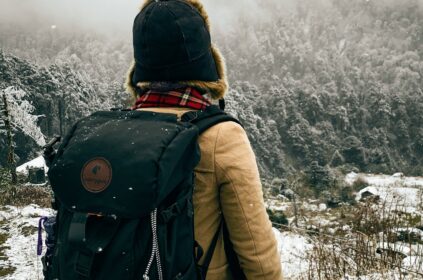As the great outdoors beckons, many of us lace up our hiking boots, eager to explore the great outdoors. However, with the thrill of adventure comes the risk of injury. Hiking, like any physical activity, carries a range of potential hazards that can leave even the most seasoned hiker sidelined. In this article, we’ll delve into the most common hiking injuries, their causes, and most importantly, provide practical tips on how to prevent them.
1. Blistering and Foot Problems
Blisters, corns, and calluses are common afflictions for hikers. These issues arise from friction, moisture, and poor footwear. To prevent foot woes:
- Wear properly fitting, breathable shoes with adequate arch support.
- Apply lubricants like petroleum jelly or blister shields to high-friction areas.
- Trim toenails to prevent ingrown toenails.
- Wear moisture-wicking socks and change them regularly.
2. Sprains and Strains
Sprains and strains occur when muscles or ligaments are stretched or torn. Prevention is key:
- Warm up before hiking with light exercises and stretching.
- Strengthen your ankles and legs through exercises like calf raises and squats.
- Wear supportive footwear and consider using trekking poles for added stability.
3. Knee Injuries
Knee injuries, such as patellofemoral pain syndrome, can be debilitating. Prevention is crucial:
- Strengthen your quadriceps and hamstrings through exercises like lunges and leg press.
- Wear supportive knee-high socks and consider using knee braces.
- Gradually increase your hiking distance and intensity to avoid sudden stress on your knees.
4. Back and Spinal Injuries
Back and spinal injuries, such as herniated discs, can be severe. Prevention is vital:
- Strengthen your core through exercises like planks and bridges.
- Maintain good posture and avoid heavy backpacks.
- Take regular breaks to stretch and rest your back.
5. Heat-Related Illnesses
Heat exhaustion and heatstroke are life-threatening conditions. Prevention is essential:
- Acclimatize to high temperatures by gradually increasing your exposure.
- Wear light-colored, breathable clothing and a hat.
- Stay hydrated by drinking plenty of water and electrolyte-rich beverages.
6. Altitude Sickness
Altitude sickness, also known as acute mountain sickness (AMS), can be severe. Prevention is crucial:
- Acclimatize to high altitudes by gradually increasing your elevation.
- Monitor your body’s response and descend if symptoms occur.
- Avoid strenuous activities at high elevations.
7. Snake and Insect Bites
Snake and insect bites can be serious. Prevention is vital:
- Wear protective clothing and apply insect repellent.
- Avoid areas with high snake activity and be aware of your surroundings.
- Carry a first-aid kit and know how to treat snake and insect bites.
8. Hypothermia and Hypothermia
Hypothermia and hypothermia can be deadly. Prevention is essential:
- Dress in layers and wear moisture-wicking clothing.
- Stay dry and avoid getting wet.
- Monitor your body temperature and seek shelter if necessary.
Conclusion
Hiking injuries can be prevented with proper preparation, awareness, and precautions. By understanding the common hiking injuries and taking steps to prevent them, you’ll be well on your way to a safe and enjoyable hiking experience. Remember to always prioritize your safety and the safety of those around you. Happy trails!









